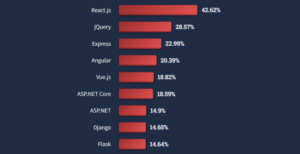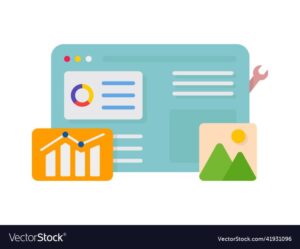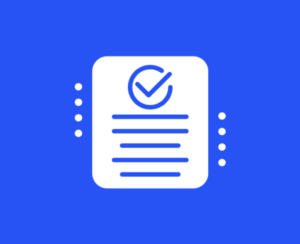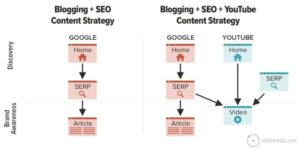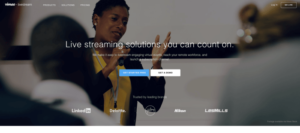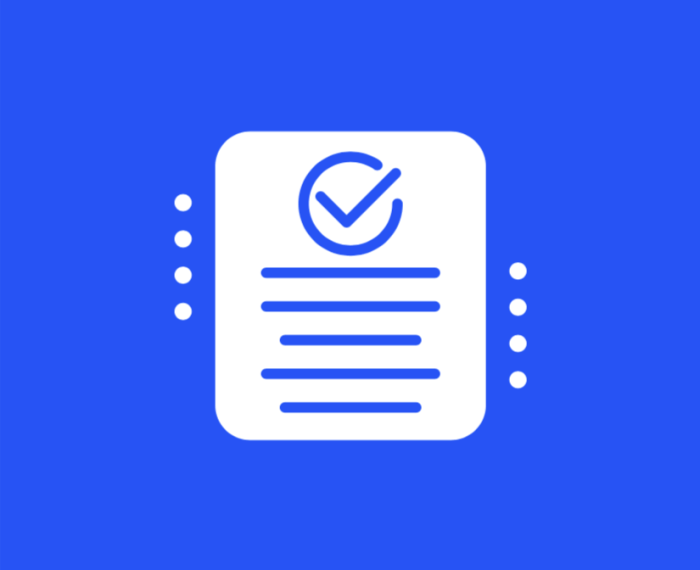
Beginning with Accessible web design standards, the narrative unfolds in a compelling and distinctive manner, drawing readers into a story that promises to be both engaging and uniquely memorable.
Accessible web design is all about creating digital experiences that everyone, regardless of their abilities or disabilities, can enjoy. These standards not only ensure compliance with legal requirements but also enhance user experience by making websites easier to navigate and understand for all visitors. Learning about the principles set forth by the Web Content Accessibility Guidelines (WCAG) can empower creators to build more inclusive sites.
Understanding Accessible Web Design Standards

Accessible web design standards are essential for creating websites that everyone can use, regardless of their abilities or disabilities. These standards aim to ensure that all users, including those with visual, auditory, motor, or cognitive impairments, have equal access to information and functionality on the web. By adhering to these standards, designers can improve the user experience for all visitors, fostering inclusivity and engagement.The Web Content Accessibility Guidelines (WCAG) provide a comprehensive framework for implementing accessible web design.
These guidelines are structured around four key principles: Perceivable, Operable, Understandable, and Robust (POUR). Each principle addresses different aspects of accessibility, ensuring that web content is accessible to everyone, including people with disabilities. For instance, Perceivable focuses on making information available to the senses, while Operable emphasizes that users can navigate and interact with the interface.
Principles of WCAG
The WCAG guidelines are broken down into specific criteria that help developers create accessible web content. These criteria include:
- Text Alternatives: Providing text alternatives for any non-text content, such as images, allows screen readers to convey important information to users with visual impairments.
- Keyboard Accessibility: Ensuring that all functionality is available from a keyboard is crucial for users who cannot use a mouse due to motor disabilities.
- Readable and Understandable: Text content should be readable and understandable, using clear language and structure to convey meaning effectively. This is especially important for users with cognitive disabilities.
- Adaptable Content: Content should be adaptable to different situations, allowing for the use of assistive technologies and varying screen sizes, ensuring a consistent experience across devices.
- Accessible Forms: Forms must be labeled correctly and provide clear instructions for users, which is vital for all users, especially those relying on screen readers.
Inclusive design is not only beneficial for users with disabilities but also enhances usability for all users. By creating websites that accommodate various needs, designers can improve navigation and comprehension, making the overall experience smoother. For example, using sufficient color contrast enhances readability for users with low vision, while also benefiting users in bright environments.
“Accessibility is not a feature; it’s a necessity.”
Incorporating accessible web design standards leads to broader reach and engagement for businesses and organizations. When websites are designed with inclusivity in mind, they extend their potential audience, create positive brand associations, and promote equal access to digital information. The commitment to these standards reflects a society that values and respects all individuals, ensuring that the web is a space for everyone.
Implementing Accessible Design Techniques
Creating an inclusive web experience goes beyond just meeting standards; it requires thoughtful implementation of design techniques that cater to all users. By focusing on accessible navigation, color contrast, font adjustments, and proper use of alternative text, designers can significantly enhance usability for individuals with disabilities.
Creating Accessible Navigation Menus and Site Structures
Accessible navigation is key to ensuring users can find the information they seek without frustration. A well-structured site should incorporate elements that enhance navigation for everyone, including those using assistive technologies. Here are some methods to consider:
- Use clear and descriptive labels for menu items to ensure users know where each link leads.
- Implement a logical heading structure (H1, H2, H3) to create a hierarchy that assists in navigation.
- Ensure all navigation elements are keyboard accessible, allowing users to tab through links without a mouse.
- Utilize ARIA landmarks to help screen reader users quickly identify sections of the page.
Color Contrast Guidelines and Font Size Adjustments
Readability is paramount for web content, and color contrast plays a crucial role in helping users distinguish text from its background. Adhering to specific guidelines can make a significant difference. The following points illustrate best practices for color contrast and font sizes:
- Maintain a minimum color contrast ratio of 4.5:1 for normal text and 3:1 for large text to ensure visibility.
- Choose font sizes that are at least 16 pixels for body text to enhance readability across devices.
- Provide options for users to adjust text sizes on the site without breaking the layout.
- Utilize a sans-serif font for better legibility, particularly in online environments.
Using Alternative Text for Images and Multimedia Content
Alternative text (alt text) is essential for conveying the meaning of images and multimedia for users who rely on screen readers. Proper implementation aids in understanding content context and significance. Here are key considerations for using alt text effectively:
- Describe the content and function of the image succinctly, ensuring the description is relevant to the surrounding text.
- For decorative images that do not convey information, use an empty alt attribute (alt=””) to signify that they can be skipped by screen readers.
- When including complex images like graphs or infographics, provide a summary of key insights, complemented by detailed text elsewhere on the page.
- Ensure video and audio content includes captions and transcripts to provide equal access to information.
Integrating Marketing Strategies with Accessibility

Accessible web design is an essential aspect of modern marketing strategies, as it not only enhances user experience but also broadens the reach of digital content. By focusing on accessibility, businesses can ensure that their websites are usable for everyone, including people with disabilities. This approach not only aligns with ethical standards but also drives better engagement, higher conversion rates, and improved search engine rankings.
Influence of Accessible Web Design on Search Engine Marketing
Incorporating accessibility into web design significantly impacts search engine optimization () and overall site promotion. Search engines prioritize sites that are user-friendly and accessible, which can improve organic rankings. Elements such as alt text for images, proper heading structures, and descriptive link texts enhance both accessibility and .
- Search engines favor accessible content, leading to higher visibility in search results.
- Accessible websites often experience lower bounce rates, as users can navigate easily, resulting in improved user retention.
- Inclusion of s in accessible elements like alt tags ensures that search engines can index content effectively.
- Accessible sites often load faster, which is a critical factor for search engine rankings.
“Accessibility is not just a legal requirement; it’s a critical part of the user experience that influences .”
Accessible Design and Social Media Engagement Strategies
Accessible design plays a vital role in enhancing social media engagement. Content that is easily accessible can be shared more broadly, reaching diverse audiences. This can help businesses connect with users with varying needs and preferences, ultimately leading to increased brand loyalty.
- Using captions and transcripts in social media videos ensures individuals who are deaf or hard of hearing can engage with the content.
- Creating visual content that is compliant with accessibility standards can enhance shareability and interaction across social platforms.
- Employing accessible hashtags and alt text helps users with screen readers navigate social media posts efficiently.
- Engaging with followers in a way that considers diverse accessibility needs fosters a sense of community and inclusivity.
“Social media is an extension of your brand; ensuring accessibility opens new conversations and connections.”
Incorporating Accessibility into Video Marketing Campaigns
When it comes to video marketing, accessibility must be a critical consideration to ensure all formats are user-friendly. Videos that include accessibility features can reach a wider audience and provide a better viewing experience for everyone.
- Always include closed captions for videos so that individuals who are deaf or hard of hearing can follow along.
- Add audio descriptions to provide context for visual elements, helping those with visual impairments understand the content.
- Choose video players that are compliant with accessibility standards, ensuring easy navigation and interaction.
- Offer multiple formats for videos, including downloadable transcripts and summaries, catering to various learning styles and accessibility needs.
“Accessible video content ensures that no one is left out, providing equal opportunities for engagement.”
Final Wrap-Up
In summary, embracing accessible web design standards is not just a legal obligation but a commitment to enhancing the online experience for everyone. By implementing thoughtful design techniques and integrating accessibility into marketing strategies, businesses can reach a broader audience while fostering an inclusive digital environment. The journey towards accessibility is ongoing, but every step taken makes the web a better place for all users.
Query Resolution
What are accessibility standards?
Accessibility standards are guidelines that ensure web content is usable for people with disabilities, covering aspects like visual, auditory, and cognitive accessibility.
How does accessibility impact ?
Accessibility can improve as search engines favor sites that provide a better user experience, which includes accessible designs that are easier to navigate.
Can accessible design benefit all users?
Yes, accessible design enhances usability for everyone, making sites easier to navigate and understand for all users, not just those with disabilities.
What is the role of alternative text in web accessibility?
Alternative text describes images for users who rely on screen readers, ensuring they understand the content and context of visual elements.
How can I test my website for accessibility?
You can use various tools and services, such as WAVE or AXE, to evaluate your website’s accessibility and identify areas for improvement.

